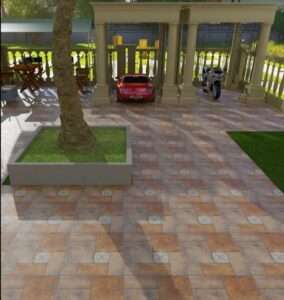How to check the quality of tiles?

How to check the quality of tiles? First Understanding the Importance of Tile Quality
Tiles play a pivotal role in defining the overall look and feel of a space. Poor-quality tiles can lead to a range of problems, from premature wear and tear to costly replacements. quality of tiles Therefore, it’s imperative to know how to discern top-notch tiles from subpar ones.
Identifying High-Quality Tiles

Visual Inspection
A vital first step in evaluating tile quality is a visual assessment. Look for the following characteristics:
- Uniform Color and Texture: High-quality tiles have consistent coloration and texture across the entire surface.
- Smooth Edges: Check for smooth, well-finished edges, as rough edges can be a sign of poor craftsmanship.
- Minimal Surface Imperfections: While minor irregularities are common, excessive imperfections may indicate lower quality. quality of tiles
Assessing Tile Hardness
Tile hardness is measured on the Mohs scale. The higher the rating, the more resistant the tile is to scratches and wear. quality of tiles Opt for tiles with a Mohs rating appropriate for the intended use:
- Porcelain Tiles (Rating 5-9): Ideal for high-traffic areas like kitchens and bathrooms.
- Ceramic Tiles (Rating 3-7): Suitable for areas with moderate foot traffic.
Water Absorption Rate
A low water absorption rate is a hallmark of quality tiles. This ensures they are less susceptible to water damage and staining. Look for tiles with an absorption rate of less than 0.5%.
Checking for Warping
Lay the tiles flat on a surface and observe if there is any warping. Warped tiles can lead to uneven surfaces and difficulties during installation.
Conducting a Sound Test
Gently tap the tiles together. A high-pitched, clear sound indicates good quality, while a dull thud may signify a defect.
FAQ (Frequently Asked Questions)
-
How do you know if tile is good quality?
-
What thickness of tile is best?
-
How do you check for tile defects?
-
Are all tiles the same quality?
